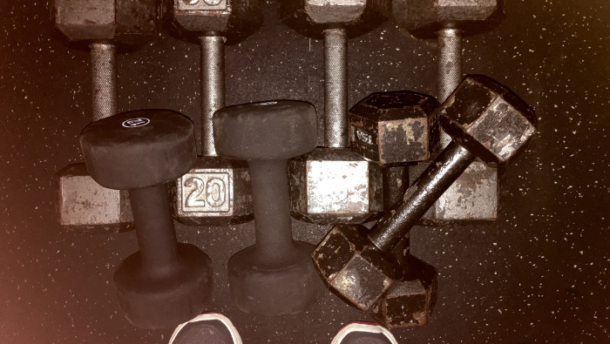Part 1 – First Trimester Exercise Guidelines

In 2019, I decided to dive into pre & postnatal fitness to learn more myself as a new mom and to share this information to all the amazing moms out there. We have so much on our plates and most of us don’t have time to learn about what our bodies actually need during these baby making years (and after). Unfortunately, there is not enough information readily available about what we should/shouldn’t be doing during pregnancy & postpartum when it comes to exercise. Our OBGYNS don’t give us a guide or point us in the right direction of someone who can help, which can be incredibly frustrating. We are often left on our own to figure it all out, while also taking care of other little humans. It’s a lot to handle!
A Little About Me
At the time I didn’t realize it but during my first pregnancy, I overdid it and pushed harder than I should have. My body still feels these effects on a daily basis, especially my lower back. I’m currentl pregnant with my second little boy and this time around I am doing it differently by REALLY listening to my body and educating myself on what is beneficial and what isn’t.
I am currently studying for my pre & post natal certification through an amazing company called Girls Gone Strong. My goal is to share as much as I can with my audience and help educate other moms who need some guidance. I’m excited to share this three part blog series that will highlight each trimester and some general guidelines for exercise. Let’s begin with Trimester 1.
The 1st Trimester
The first trimester comes with so many emotions and feelings, both physically and mentally. With my first pregnancy, I felt great and didn’t experience much sickness or nausea. With my second, it was a whole different story! I felt nauseous from morning to night (until about 13-14 weeks), could barely eat, had trouble sleeping, experienced bad headaches, the whole thing! Both are boys so it goes to show the same gender can feel very different. I say this to begin with a very important fact we can’t forget – every woman is different and every pregnancy is different. Your workout program will depend on your level of experience prior to pregnancy, how you feel throughout your pregnancy, and your goals. Most importantly, you will need to listen and work with your doctor to make sure you are cleared to workout (that is the first step) and you are exercising within their guidelines and restrictions, if any. The below guidelines are not to substitute for medical advice but to share general guidelines from what I am learning and what the current research says. Please talk with your doctor and get clearance before starting any workout program.

The Core & Pelvic Floor Connection
It’s important to learn how to connect your core & pelvic floor early on in pregnancy. It’s beneficial for proper function of the pelvic floor during pregnancy, birth, and postpartum. A great way to do this is to incorporate the connection breath before a workout (or after if you prefer). See my previous blog post for details on what the connection breath is and how to perform it.
Breathing is so important! One thing you want to avoid is holding your breath or bracing too hard during movements that are more challenging. Remind yourself to breath throughout each exercise, ideally inhaling when setting up the exercise and exhaling during the effort. For example, during a squat, inhale on the way down to relax your belly and pelvic floor and then exhale on the way up as you lift the pelvic floor.
A great resource to learn more about proper breathing during exercise is this article published by Girls Gone Strong. I highly recommend reading it and watching the short video to learn more.
Strength Training
Fortunately, few modifications need to be made in the first trimester when strength training. Just some small adjustments in your effort, rest & recovery, and focus. The first trimester is when energy levels are relatively low so if you feel your body needs extra rest instead of a workout, please listen. Exercising can help relieve symptoms of nausea and can boost energy for some women, while for others it’s the opposite. If you are feeling up for a workout and need to get yourself in the mood, including a short cardiovascular warm-up before a workout is great! Three to five minutes of a light jog, high knee march, jumping jacks, etc. is perfect.
Effort, Sets, and Reps
It’s OK to feel like you have less stamina and experience a shortness of breath a bit quicker than your pre-pregnancy days. We often forget how much work our body is doing internally 24/7 to care for our baby so give yourself a break Mama! Pregnancy naturally increases your heart rate so it’s important to focus on how you feel during your strength sessions. Let’s use a 10 point scale as a reference point for effort, with 1 being little or no activity (watching tv) and 10 being maximal activity (impossible to keep going, can’t breathe). You will want to stay between a 4-7 on this scale, depending on your fitness level. A few guidelines:
- If lifting at a higher rep range with lighter weights (2-3 sets of 12-15 reps) effort should feel like a 5-6.
- If lifting at a moderate rep range with moderate weight (3 sets of 6-12 reps) effort should feel like a 6-7. Since you are using heavier weights, your body will work harder and that will cause you to fatigue quicker.
It’s recommended to stay within one of the above ranges rather than lifting in a lower rep range (4 sets of 3-5 reps) with heavy weights since this can cause excessive pressure on your pelvic floor. Our goal is to build and maintain strength, not to win the crossfit games!
Rest and Recovery
This is the time to take extra rest between sets of exercises. There is no shame in this & listening to your body is the best thing you can do. I cannot emphasize this enough! If you feel your heart rate is way too high and you are out of breath, pause, breath, and rest until you feel ok to resume.
Focus and Goals
The main goals during the 1st trimester are to:
- Increase overall strength
- Increase or preserve muscle mass
- Strengthen your core
- Balance the tone of your pelvic floor (and connect with your core)
When creating your strength workout, here are a few key areas to focus on:
- The upper back. A common occurrence during pregnancy is an increase in breast size. In order to help support this change, you will want to have a strong upper back. Not to mention you will need those muscles when holding your baby, getting the carseat in and out, and carrying around a diaper bag full of supplies. Upper body strength is key. Some examples of good back exercises are:
- TRX Row: See my Facebook post for a video demo of this
- Band Row or Dumbbell Bent Over Row
- Glutes! Working that backside helps to keep the spine in a more neutral position (that growing belly wants to pull you forward), reduce irritation on your SI joints, and reduce unnecessary stress on your pelvic floor. Some glute exercises include:
- Glute Bridges are one of my favorite glute exercises, see my Facebook post for how to perform them
- Feet elevated glute bridge
- Hip Thrusts
- Single-Leg glute bridge
- The Core. A strong core will help your body carry the growing weight and size of the uterus, along with helping when it comes time for labor! A few examples are:
Cardio
Steady-state, low-moderate intensity cardio is safe through pregnancy and is very beneficial. Choose something that keeps your heart rate between 120-140 beats per minute. Some options are incline treadmill walking, cycling, rowing, walking, etc. I’m a HUGE fan of walking, there is nothing like getting out for some fresh air (if you can) and doing a nice long walk while listening to your favorite podcast or music. Make it a goal to do this at least twice a week! Taking a short walk is also a great pick-me-up if you sit all day at a desk or hit that afternoon slump.
Bonus! A good aerobic base is linked to better quality sleep. Sleep should be a HUGE priority during pregnancy. I know it’s easier said than done but try to get in as much as you can. Your body will thank you!
Conclusion
I hope you find these guidelines helpful and you are able to incorporate some of the exercises into your next workout. Pregnancy can throw us in all sorts of directions so again (have I said it enough?), please listen to your body and do what feels right to you. Remember, this isn’t the time to max out on weight or push yourself to the fullest. It’s a time to take care of our bodies, build our strength, and keep our growing little baby healthy.
As always, please reach out with any questions & have fun sweating the stress!
*The key points in this post are from the amazing information I am learning in my Girls Gone Strong certification so I give them all the credit. If you are a trainer looking to specialize in pre & postnatal fitness, I highly recommend getting your certification through them!
*A quick legal disclaimer – When participating in any exercise or exercise program, there is the possibility of injury. If you engage in any of the exercises or workouts on my blog, you agree to do so at your own risk. Please see full disclaimer for more details.



Recent Comments